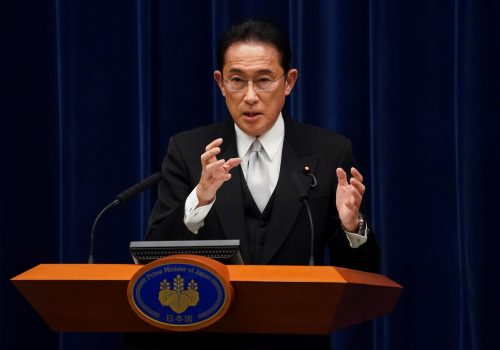January 10, 2022
Is the US going to screen outbound investment?
There is a growing consensus in Washington that the U.S. government needs more tools to prevent the People’s Republic of China (PRC) from using U.S. capital markets to amass military capabilities and control supply chain chokepoints. For example, policy experts worry that the PRC could use its dominance in rare earth mining and processing to cut off access to these essential components of electronics and other industrial goods.
These concerns have fueled legislation to update rules around reviewing the national security implications of inward foreign direct investment, and to update the United States’ export control regime. Both the Trump and the Biden administrations have assertively used entity listing to block sales of technologically sophisticated items to actors associated with the People’s Liberation Army. They also pursued executive orders prohibiting U.S. investments in security and surveillance companies associated with the PRC. Spurred in part by supply chain fragilities revealed by the Covid-19 pandemic, the Trump and Biden administrations also developed a series of executive orders studying critical supply chains — such as semiconductors, batteries and related rare earths, vaccines and protective personal equipment, and information communication technology — to identify and mitigate vulnerabilities. As well, congressional leaders have confronted supply chain concerns by proposing legislation such as the US Innovation and Competition Act and the CHIPS For America Act.
Against this policy backdrop, financial flows between the United States and China have slowed. In 2020, two-way foreign direct investment reached its lowest level since 2009 at $15.9 billion, a decline driven mostly by decreased U.S. investment in China. Venture capital flows between the two countries also dropped due largely to declining U.S. investments in China. However, despite signs of directional “decoupling,” there are still non-trivial investment flows between the United States and China. In May 2021, 248 companies headquartered in mainland China were listed on the NASDAQ, NYSE, or NYSE American with a market cap of approximately $2.1 trillion. Chinese companies raised $19 billion in primary and secondary offerings on U.S. exchanges in 2020. Meanwhile, the ongoing semiconductor shortage, public health supply chain problems, and concerns over access to clean energy materials highlight the dangers of failing to understand underlying risks in critical supply chains.
The Cornyn/Casey Bill
The Hill is now abuzz with policy entrepreneurship aimed at addressing perceived economic and national security threats inherent in the U.S.-China economic relationship. One potential legislative solution under consideration is the bipartisan National Critical Capabilities Defense Act of 2021 (NCCDA). Co-authored by Senators Casey and Cornyn, this bill is understood to propose an “outbound CFIUS,” or the Committee on Foreign Investment in the United States.
The bill will likely face significant challenges. The 2018 Foreign Investment Risk Review Modernization Act (FIRRMA) initially had an outbound screening component that was subsequently abandoned, leading many legislative watchers to believe that business interests will similarly kill this bill. There are also real concerns about the enforcement capability of an outbound investment review process, let alone the potential deleterious effects to innovation and economic growth. However, the bill’s endorsement by the U.S.-China Economic and Security Review Commission is generating renewed attention.
So, what would the NCCDA actually do, if passed? It’s useful to think of the draft legislation as creating two new executive branch capabilities — one, the authority to review outbound transactions to “countries of concern” as those transactions relate to critical capability supply chains; two, the mandate to systematically define and review national critical capabilities supply chains to recommend congressional actions to support diversification and resiliency within these supply chains.
Reviewing Outbound Investment
Many policymakers and commentators refer to the NCCDA as an outbound CFIUS. The legislation would create an interagency body chaired by United States Trade Representative (USTR) rather than Treasury to review proposed outward transactions under its purview. The structure of the Committee on National Critical Capabilities (CNCC) would be similar to CFIUS. All CFIUS agencies would be represented, in addition to the Departments of Agriculture and Labor, and a long list of ex officio members. Similar to CFIUS, the committee could undertake a risk review of a notified transaction and, if it found a risk, forward a recommendation to the president to take action against the proposed transaction.
However, there are several important differences between CFIUS and the proposed CNCC. The first has to do with scope and coverage. CFIUS can review any transaction in which a foreign entity obtains control over a U.S. business, regardless of the nationality of the foreign entity and of the activities of the U.S. business.[1] CNCC would only have review authority over outbound transactions that shift investment, ownership, or business activities that relate to national critical capabilities into entities or countries of concern.
What does that mean substantively?
1. CNCC’s ability to review would be limited to transactions into countries of concern, or entities headquartered or listed in countries of concern. Countries of concern include foreign adversaries as defined in the Secure and Trusted Communications Networks Act of 2019[2] and may include countries with non-market economies.[3] Rather than imposing outbound review on any company investing or offshoring abroad, only activities into China and Russia, or Chinese or Russian entities, would be screened.[4] This would be a major change in approach from CFIUS, which is quick to emphasize it is not a country-based screen, but is applied evenly to all foreign investors.
2. CNCC’s review would be limited to transactions affecting national critical capabilities. Such capabilities are defined as “means systems and assets, whether physical or virtual, so vital to the United States that the inability to develop such systems and assets or the incapacity or destruction of such systems or assets would have a debilitating impact on national security or crisis preparedness.” The draft legislation identifies certain medical items, critical infrastructure inputs, and military and intelligence items as national critical capabilities, as well as their supply chains. The NCCDA also creates a process through which the CNCC would consider which additional industries, beyond those listed above, should be classified as national critical capabilities and thereby subject to review.[5]
3. CNCC’s review would cover more than outbound investment. CNCC would also have jurisdiction over a range of offshoring activities that do not involve direct investment, including offshoring production, management, servicing, and design.
Additionally, CNCC processes would differ from CFIUS in four important respects:
1. Notification of covered transactions to the committee would be mandatory rather than mostly voluntary.
2. The review of covered transactions would be left to the Committee’s discretion.
3. The committee could block or modify a transaction based on a determination of “unacceptable risk to one or more national critical capabilities.” This is criteria is broader than CFIUS’s national security review remit.
4. The committee could also recommend that Congress support domestic production or supply of national critical capabilities in response to a problematic transaction.
Reporting on Vulnerabilities to National Critical Capabilities
The NCCDA would also create new reporting requirements to Congress. This is a critical component of the proposed legislation, as it would provide insights into the functioning of critical supply chains so that Congress can proactively work to address vulnerabilities. The process would enumerate national critical capabilities industries, the structure and state of their supply chains, and minimum quantities of critical items necessary to maintain capabilities. It would thereby help identify the sources of critical supply chains fragility. The legislation would also require prospective government contractors to disclose details about their supply chain, including their reliance on imports from countries of concern. These reporting requirements, along with the data collected through mandatory notifications and review processes, would provide the U.S. government with better insight into supply chain chokepoints and dependencies.
The intent of the legislation is clearly to identify vulnerabilities early on and to devote federal resources toward programs designed to diversify international suppliers, and on-shore some critical production. The legislation requires CNCC to generate such policy recommendations through a report that would be due to Congress within six months of the legislation’s enactment. The legislation’s authors emphasize the proposed act’s reporting requirements could a fact-based analysis of critical supply chain vulnerabilities.
The degree to which reporting, analysis, and policy recommendations are written into this draft legislation also marks a different approach than FIRRMA. FIRRMA primarily works as a defensive backstop against foreign ownership of U.S. businesses with significant national security-related vulnerabilities.
Some Questions
Despite the drafters insistence that the NCCDA would be narrowly targeted to strengthen critical supply chains, the proposed legislation raises multiple questions about its effect, if it were to pass. Three major reactions are:
1. The NCCDA is not a silver bullet denying PRC access to U.S. capital markets. Setting aside whether hard decoupling is prudent, the NCCDA would create a process that would only affect national critical capability supply chains. The legislation is written to provide the regulatory rulemaking process with substantial discretion, so national critical capabilities could be scoped broadly or relatively narrowly. As the relevant nexus for review is U.S. critical capabilities, this review process would have no direct effect on Chinese entities’ capability to use U.S. capital markets to fund investments in Chinese critical capabilities. The USG will likely continue to use list-based exclusions and enhanced reporting requirements for U.S. listed entities as a means of limiting investment into Chinese businesses of concern, such as those that contract with the PLA.
2. Blocking rationale based on national critical capabilities risks could create substantial legal challenges for the U.S. government. CFIUS determinations are not subject to judicial review, as they are formed on the basis of risks to national security, an area for which courts have afforded the president substantial deference. Legal challenges to CFIUS decisions have only been successful in ensuring parties are provided due process. Making decisions to block or mitigate a transaction on national critical capabilities grounds may face more challenges. Aggrieved parties would likely seek judicial recourse to adverse decisions, and courts may be unwilling to show comparable deference to the president’s interpretation of risks to a broader term like critical capabilities. Without the backing of courts, CNCC’s enforcement capabilities would likely be much weaker than CFIUS’s.
3. The NCCDA’s provisions would generate substantial bureaucratic processes demanding large investments to increase agencies’ capacity and would also create high compliance costs for firms. It also likely duplicates work, complicating efforts to centralize data on critical supply chain structures. The bill would require USTR, as chair of the CNCC, to lead data collection and analysis. Given USTR’s leading role in the interagency trade strike force, structuring the CNCC in this way makes some sense. However, given The Department of Commerce’s recent investments in supply chain data collection and analysis, it would make more sense to house much of the CNCC’s activities there. The Department has close to 40,000 employees and a 2022 budget of around $11.5 billion. USTR is a much smaller agency, with only about 280 employees and an annual budget of $73 million.
A Prediction
It seems unlikely that the NCCDA will pass in its current form. Despite claims by Senators Casey and Cornyn that it is narrowly scoped, the concept of national critical capabilities is capacious enough to cover a large percentage of economic activity. Business interests have balked. The proposed CNCC structure and activities may also create substantial legal pushback that would weaken the effect of outbound investment review.
However, the notification and data collection component of the bill is less likely to face substantial interest group opposition. A common refrain is that critical supply chains are so opaque that we cannot assess risks accurately enough to develop sound mitigation strategies. Given renewed interest in Congress to pursue more expansive industrial policies to address vulnerabilities in critical supply chains, a watered-down version of the NCCDA — scrapping outbound review, but retaining reporting requirements — has a decent chance of passing into law.
[1] Since the implementing regulation for FIRRMA went into effect in February 2020, CFIUS also has jurisdiction over some non-control transactions if the U.S. business meets the definition of a critical technology, critical infrastructure, or sensitive personal data business.
[2] “any foreign government or foreign nongovernment person engaged in a long-term pattern or serious instances of conduct significantly adverse to the national security of the United States or security and safety of United States persons.”
[3] 19 USC 1677.18(A): The term “nonmarket economy country” means any foreign country that the administering authority determines does not operate on market principles of cost or pricing structures, so that sales of merchandise in such country do not reflect the fair value of the merchandise.
[4] The criteria-based definitions in the legislation allow for the “countries of concern” list to be updated as geopolitical alliances shift. So, other countries could be considered of concern at future dates.
[5] These industries could include: energy, medical, communications and ITC, defense, transportation, aerospace, robotics, artificial intelligence, semiconductors, shipbuilding, and water.
Sarah Bauerle-Danzman is a nonresident senior fellow at the GeoEconomics Center and an assistant professor of international studies at Indiana University Bloomington.
Image: Electronic blue Circuit Board. Focus on main large chip.


